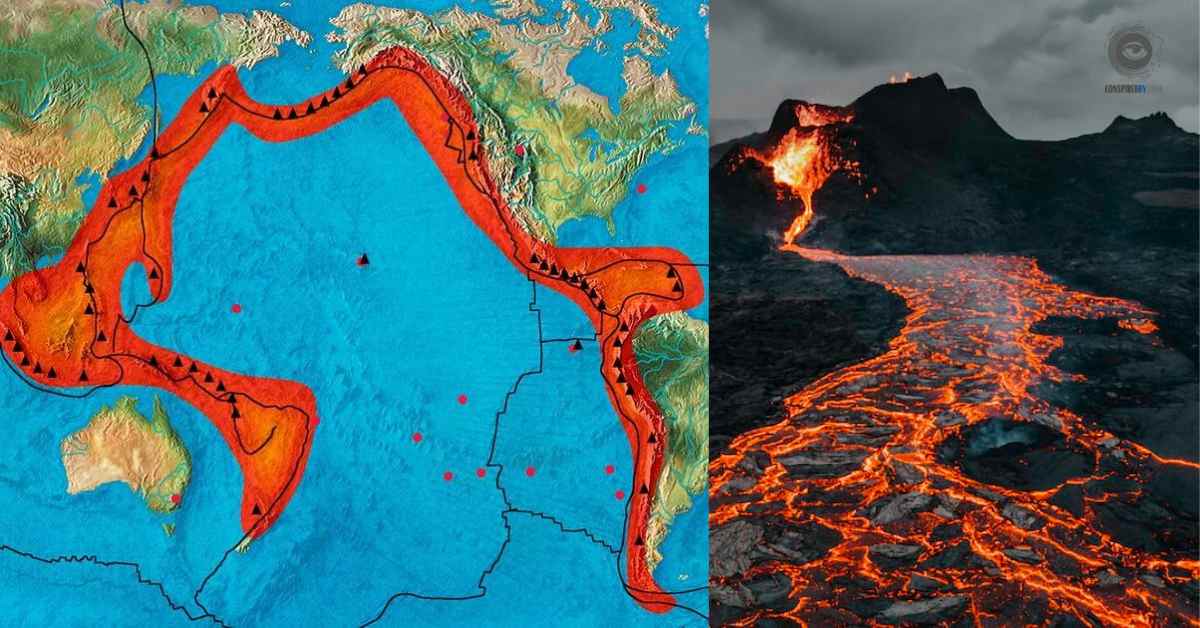The Pacific Ring of Fire is a fascinating region in the Pacific Ocean where lots of earthquakes and volcanic eruptions take place.
But what exactly is the Pacific Ring of Fire and what countries are within the ring? In this article, we’ll explore its origin, the countries within this region, and what world capitals are located there.
Furthermore, we are ready to discover the huge number of volcanoes, and what would happen if they all erupted at once. Get ready to uncover the amazing geological wonder that is the Pacific Ring of Fire.
What If the Volcanoes in the Ring of Fire Erupted Right Now?
What would happen if all the volcanoes in the Pacific Ring of Fire erupted at the same time? Well, it’s not very likely to happen, but if it did, it would have devastating impacts. There would be a huge amount of ash, gas, and lava coming out of the volcanoes.
Not only would the areas close to the volcanoes be in danger. The effects will be felt around the world and will last for a longer period. The countries that are even at a safe distance from the volcanoes will be covered in volcanic ash and debris. It will even have a serious impact on the weather and air travel.
The Pacific Ring of Fire: Origins of the Name
The name “Pacific Ring of Fire” was given to the volcano placement along the rim of the Pacific Ocean. In this belt in the Pacific Ocean, many earthquakes and volcanic eruptions take place.
This region in the Pacific has the shape of a horseshoe and expands for about 40,000 kilometers (25,000 miles). The name “Ring of Fire” comes from the many active volcanoes that surround the rim of the Pacific Ocean. It looks like a fiery ring when you see it from above.
What Countries are in the Pacific Ring of Fire
Chile, Peru, Ecuador, Colombia, Mexico, the United States (west coast), Canada, Russia, Japan, the Philippines, Indonesia, Papua New Guinea, New Zealand, Fiji, Samoa, and more countries are within the pacific ring of Fire. These countries are located near the edges of the tectonic plates. So they are more likely to have earthquakes and volcanic eruptions.
Guess what? Some of the world’s capital cities are actually on the Pacific Ring of Fire! Tokyo is close to many active fault lines, which means it’s at risk of experiencing earthquakes.
Tokyo (Japan), Manila (Philippines), Lima (Peru), and Santiago (Chile) are some of the world’s capitals on this ring.
The Pacific Ring of Fire in Asia:
Asia is a place where the Pacific Ring of Fire has a big impact. Japan, the Philippines, and Indonesia are some of the Asian Countries that are subjected to a lot of earthquakes and volcanic eruptions.
Japan, in particular, is where several major tectonic plates meet, and that’s why it has so many earthquakes. We can’t forget the big earthquake and tsunami that hit Japan in 2011. It showed us just how powerful the Pacific Ring of Fire can be.
The Staggering Number of Volcanoes in the Pacific Ring of Fire
One of the most amazing things about the Pacific Ring of Fire is the huge number of volcanoes found there. Surprisingly about 75% of the World’s active volcanoes are in the Ring of Fire! Not just that, The Ring of Fire is also responsible for the world’s 90% of earthquakes!
This region has something called subduction zones, where one tectonic plate goes under another one. The heat and pressure generated from such can lead to volcanic activity.
Conclusion:
The Pacific Ring of Fire is an incredible place in the Pacific Ocean where many earthquakes and volcanic eruptions occur. It got its name because of the fiery ring of volcanoes that surround the Pacific Ocean. It stretches for a long distance and includes many countries and capital cities.
Asia, in particular, is greatly influenced. Countries like Japan, the Philippines, and Indonesia experiencing a lot of geological activity as a result of the Pacific belt.
The number of volcanoes in the Ring of Fire is astonishing, and if they were to erupt all at once, it would have a huge impact. The Pacific Ring of Fire is a true geological marvel that reminds us of the ever-changing nature of our world.
Also read,


